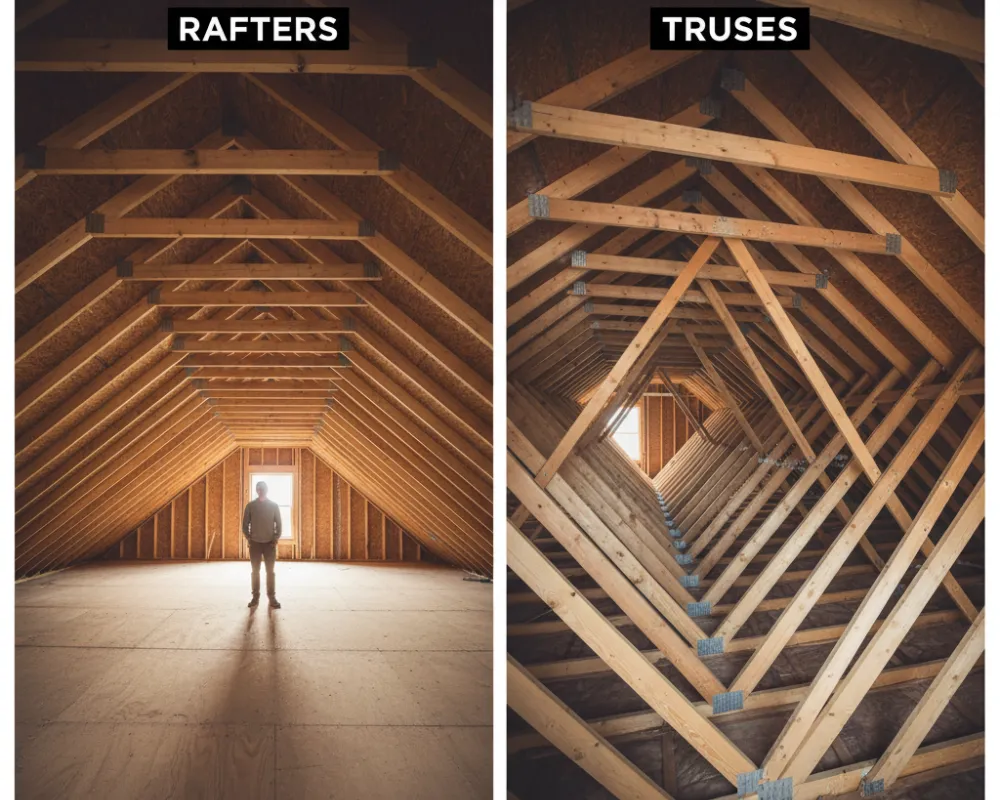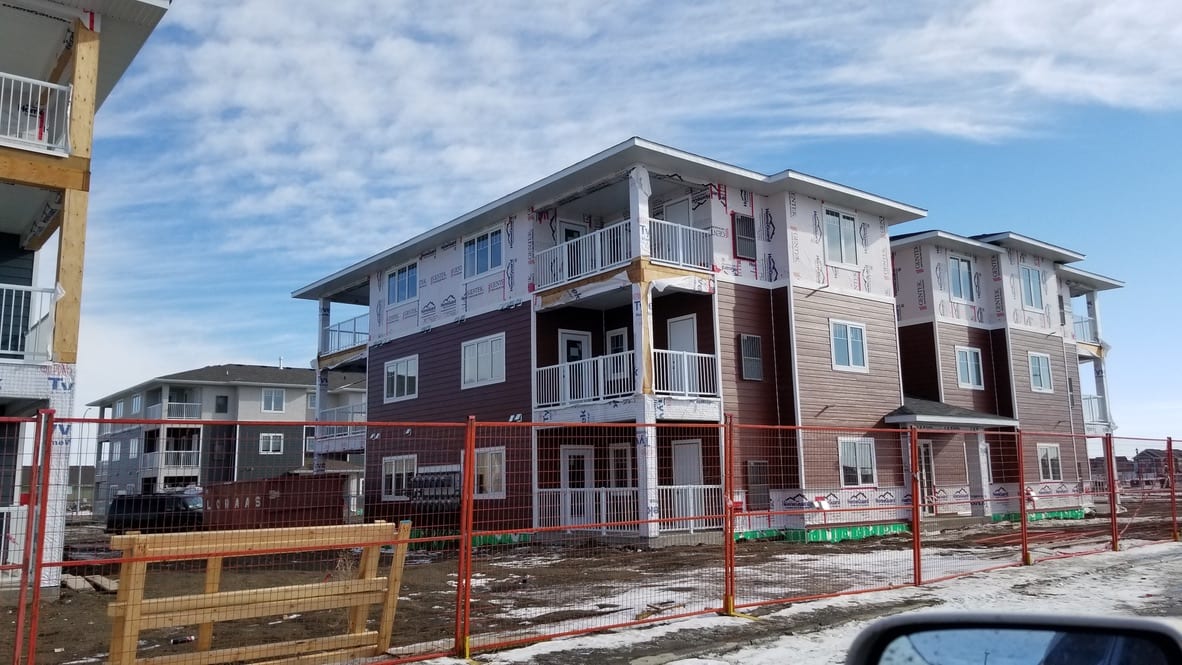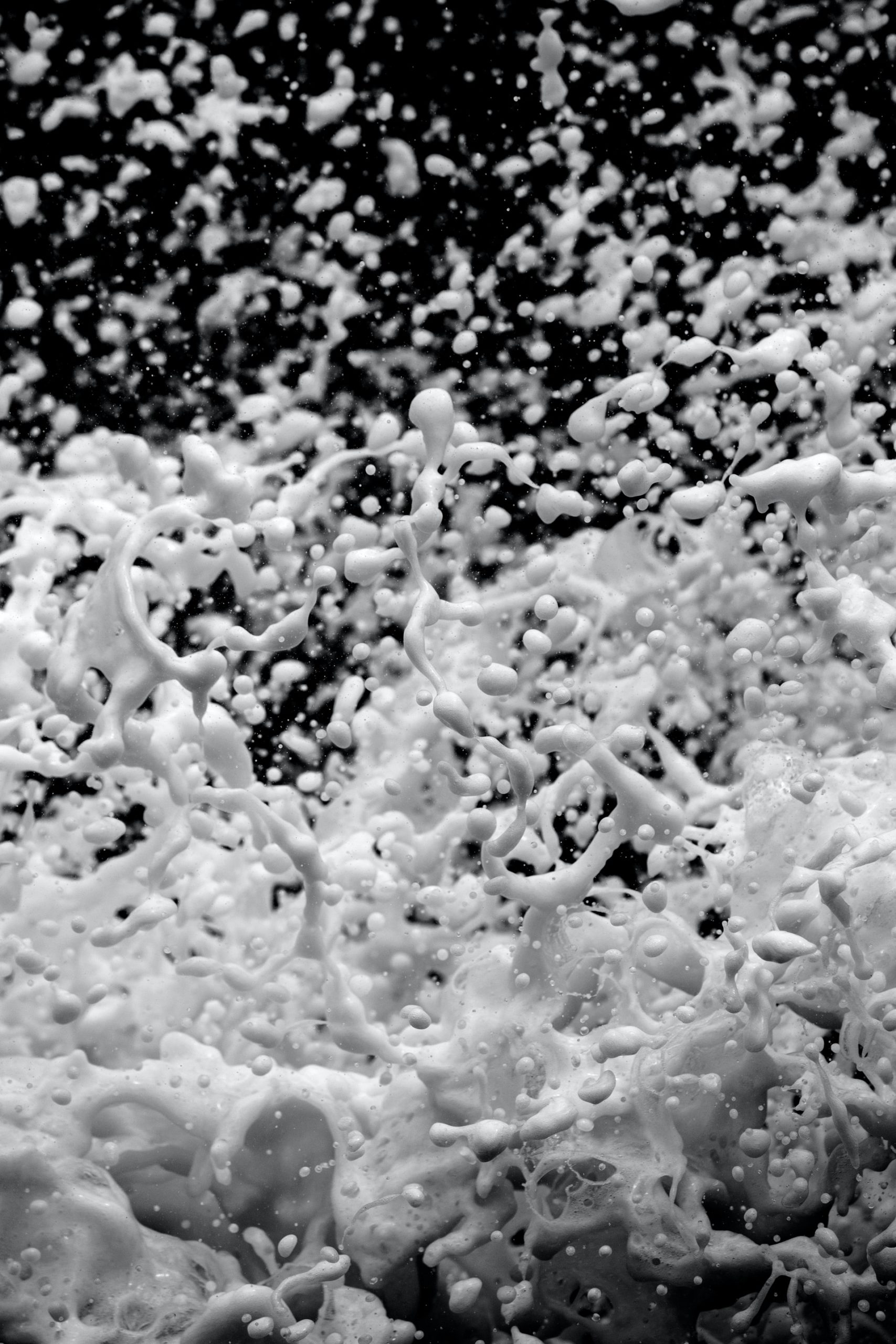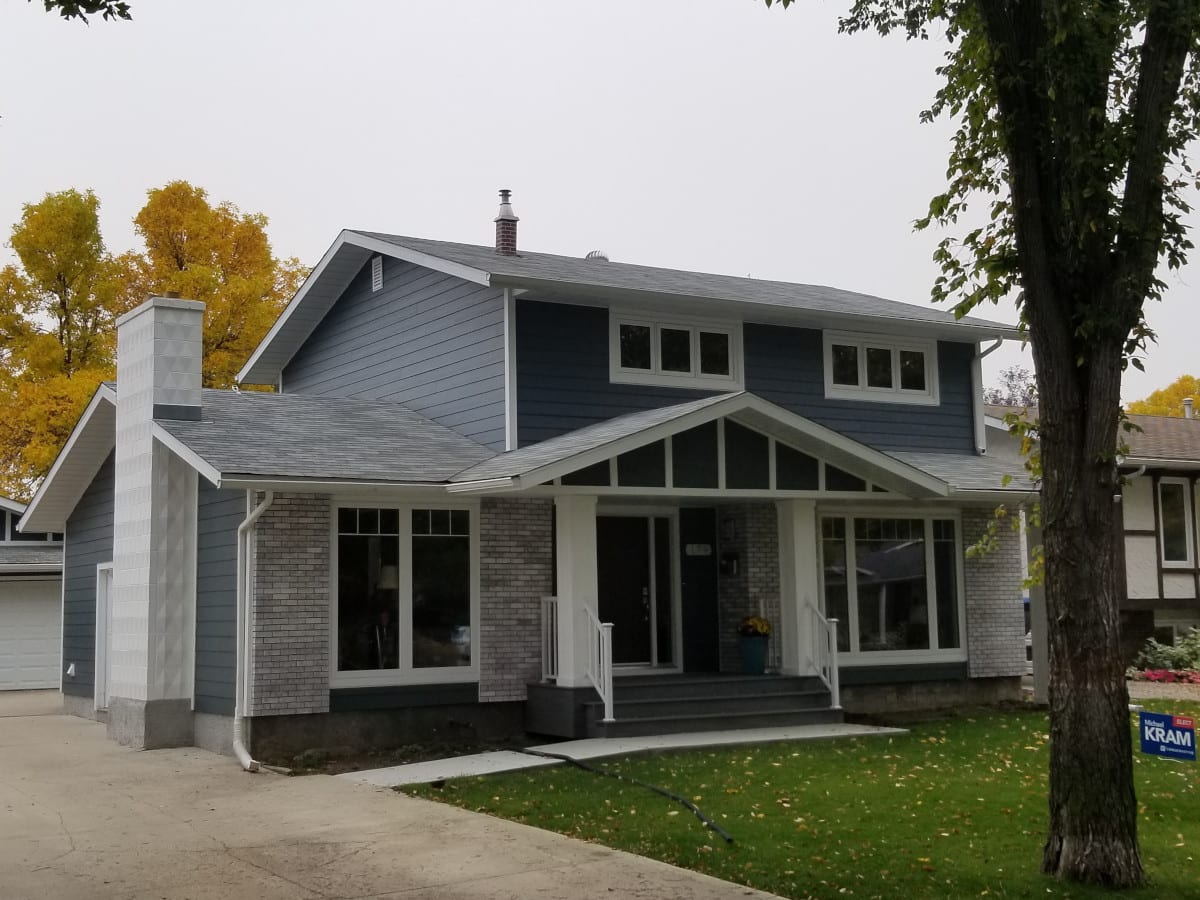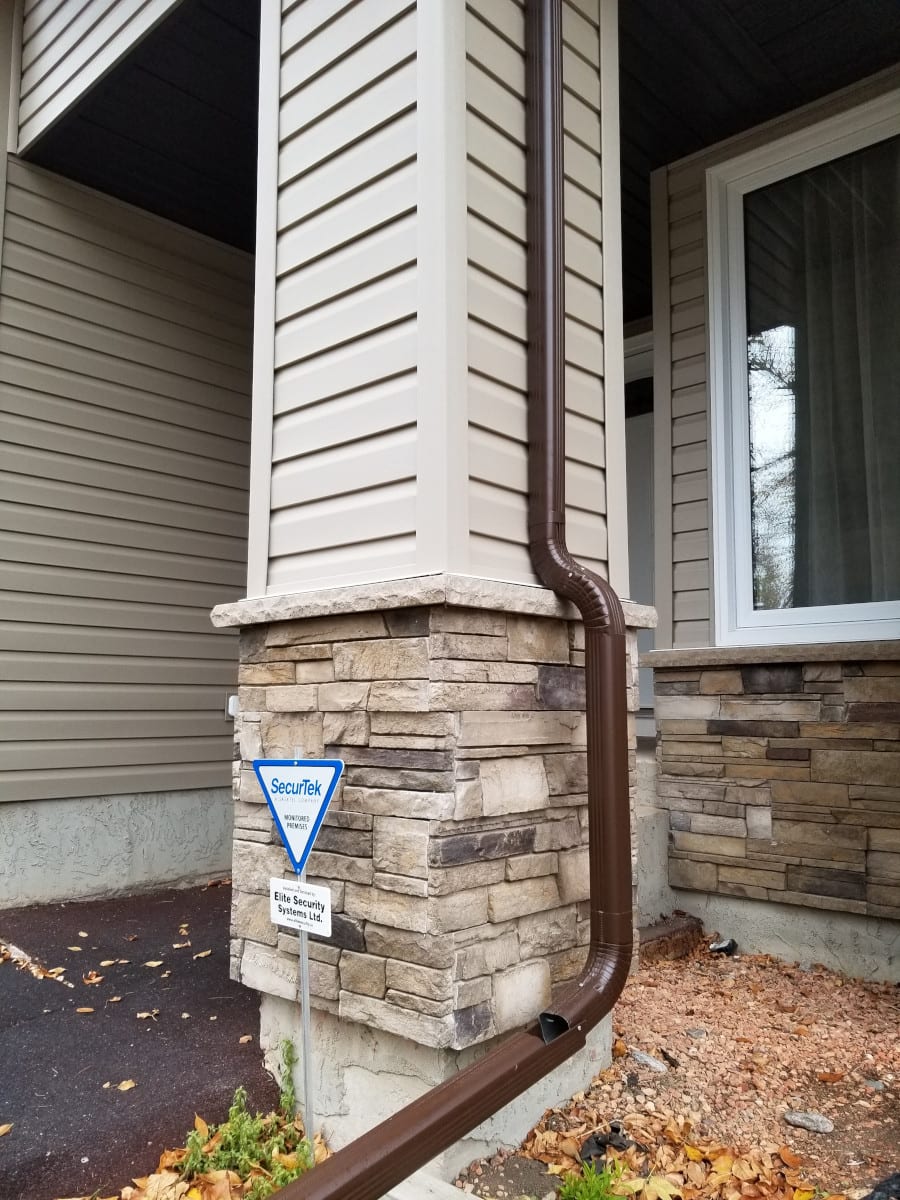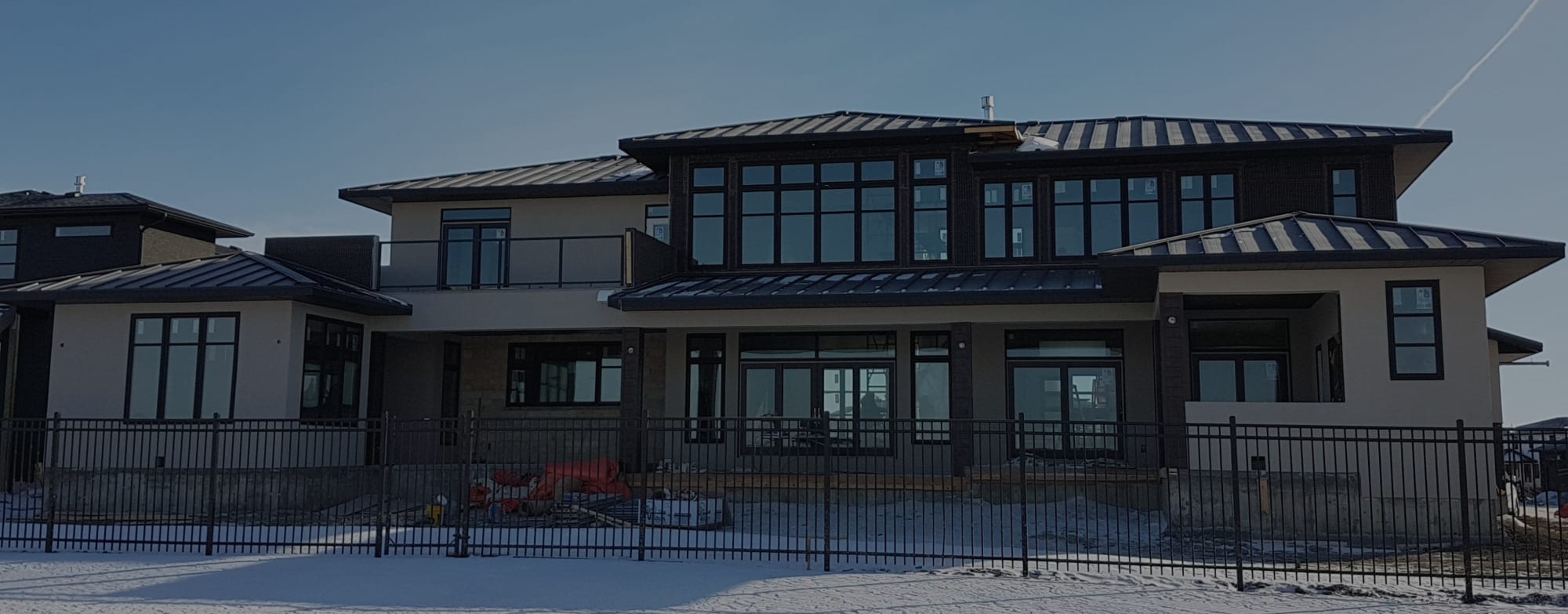Ever wondered what’s holding up your roof? Beneath the shingles and decking, a sturdy framework is doing all the heavy lifting. This framework is typically made of either rafters or trusses. When it comes to rafters vs trusses, they both do the same job. But, there are key differences that are important for homeowners in Regina to understand.
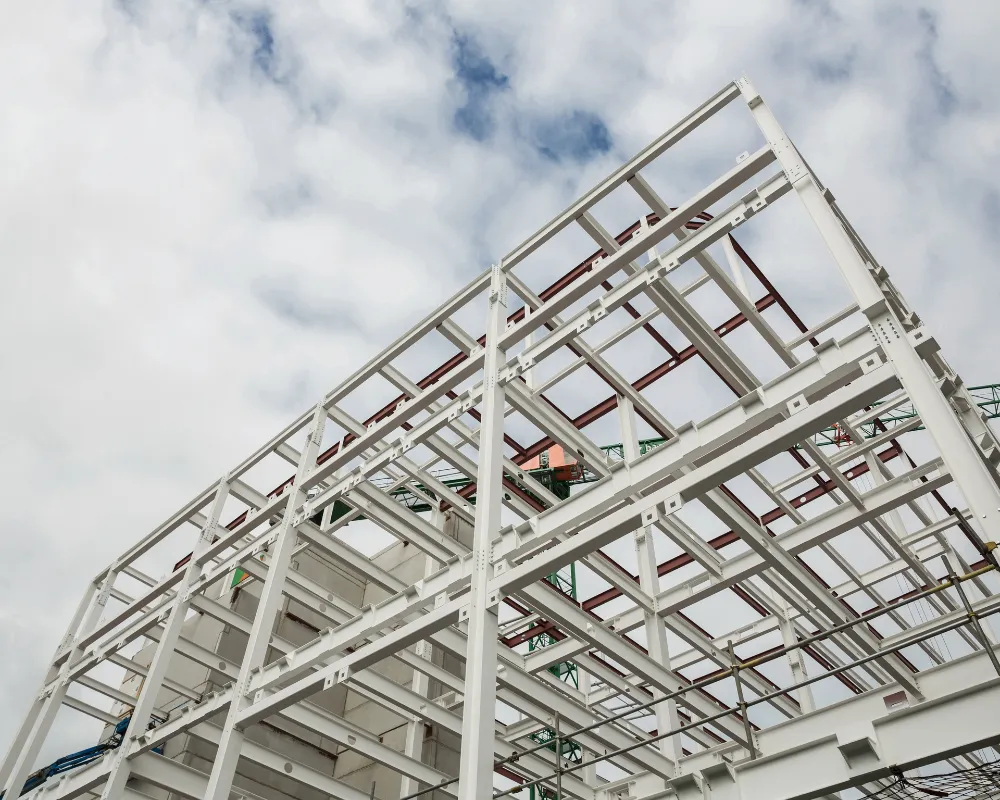
What are Rafters?
Rafters are the traditional method of framing a roof. They are individual beams, usually made of larger dimensional lumber like 2x8s or 2x10s, that are cut and assembled on-site by skilled carpenters. They run from the peak of the roof (the ridge) down to the exterior walls.
Pros of Rafters:
- Creates Open Attic Space: Because they don’t have the web-like structure of trusses, rafters create a large, open attic space. This is ideal if you’re dreaming of a vaulted ceiling or an attic conversion.
- Flexibility: Rafters can be easily modified for renovations or additions.
Cons of Rafters:
- More Expensive: Building a roof with rafters is more labor-intensive and requires more expensive lumber, making it the pricier option.
- Slower Construction: Since they are built on-site, construction can be delayed by bad weather.
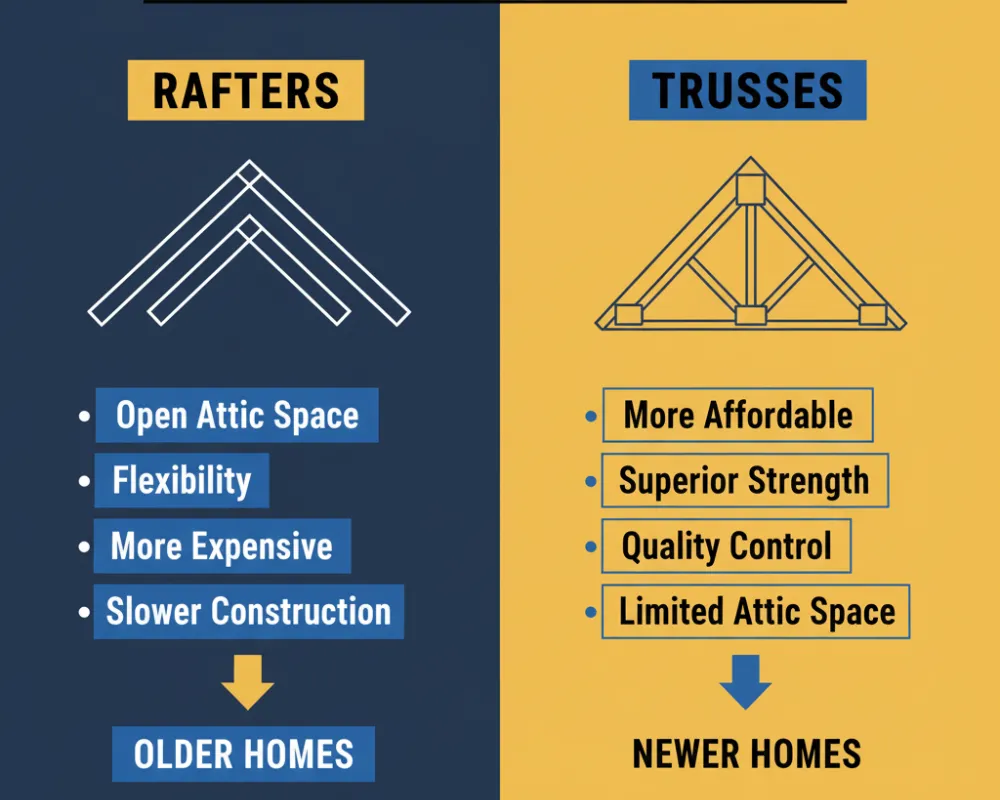
What are Trusses?
Trusses are a more modern and increasingly popular method of roof framing. They are prefabricated, triangular frameworks of smaller dimensional lumber (like 2x4s) held together with metal plates. These are engineered in a factory to precise specifications and then delivered to the construction site to be lifted into place.
Pros of Trusses:
- More Affordable: Trusses use less lumber and are much faster to install, which significantly lowers labor costs.
- Superior Strength: The triangular webbing design of trusses makes them incredibly strong and able to span long distances.
- Quality Control: Because they are built in a controlled factory environment, trusses are very consistent in quality.
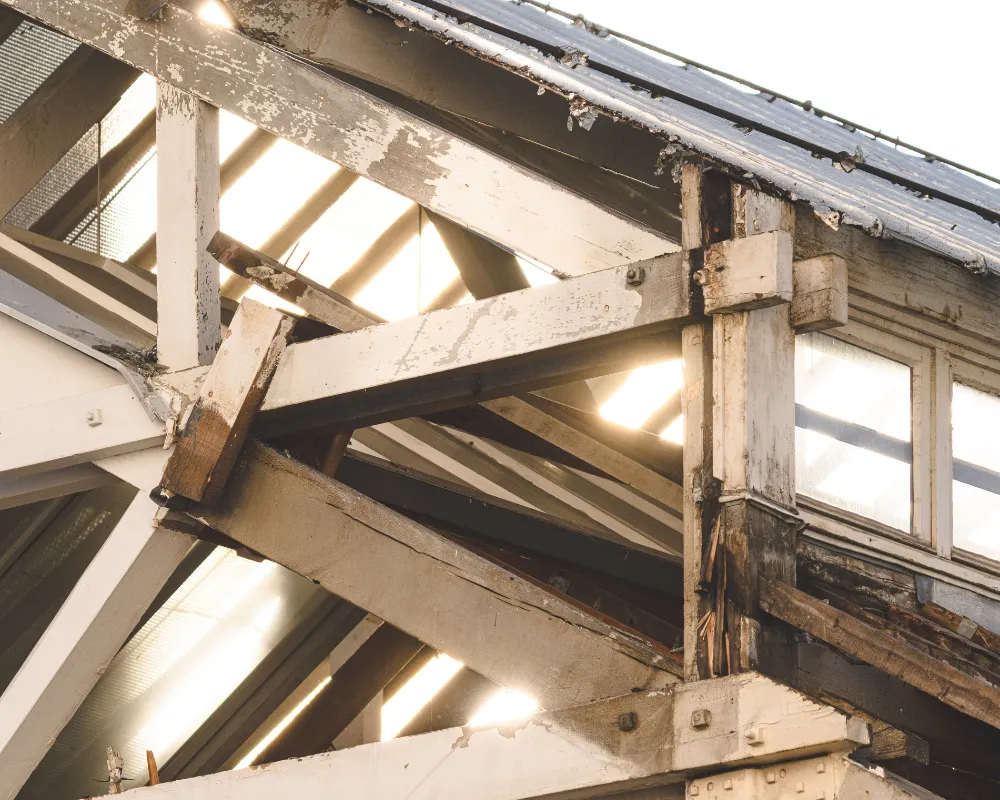
Cons of Trusses:
- Limited Attic Space: The webbing of trusses fills the attic space, making it difficult to use for storage or living space.
- Difficult to Modify: Altering a truss is a bad idea, as it can compromise the structural integrity of your roof.
Which is More Common in Regina?
For the past few decades, trusses have been used in about 80% of new residential construction projects, including in Regina. Their affordability, strength, and speed of installation make them the preferred choice for most builders. However, you’ll still find rafters in many of our city’s older, character homes.

